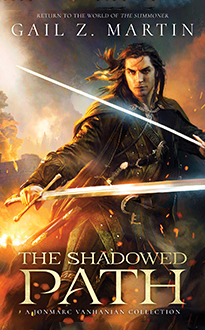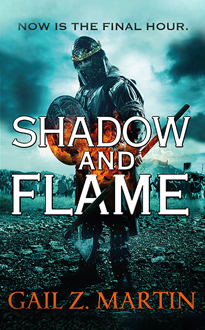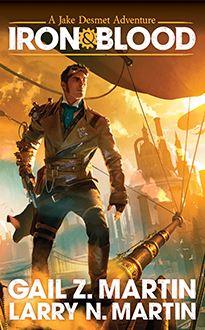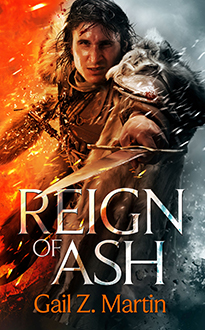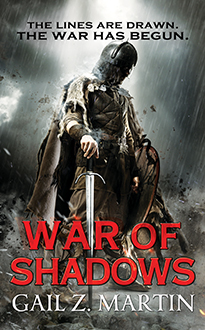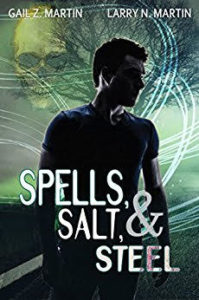by Gail Z. Martin
Vampire stories have been around a long time, especially if you count folklore in addition to stories like Dracula. Recently, we’ve had a vampire-palooza in fiction, movies and TV, where you can’t swing a dead cat without hitting a bloodsucker. If a crowd of vampires is a scourge (personally, I like “murder” as in crows), then have vampires become the scourge of fiction, and have they worn out their welcome?
Personally, I don’t think the undead are going to ride off into the sunrise any time soon. The vampire mythos is just too compelling, too primal, too tragically human. But I do think that how we portray vampires will continue to shift, and we’ll cycle through various popular depictions with new twists.
I’ve loved vampires since I was a kid, watching the old Dark Shadows TV show before I was old enough to go to school. The very first story I made up, when I was five years old, was about a vampire. Vampires, witches and ghosts were my preferred story elements in anything I read all the time I was growing up–and if I could get all three in one, that was a happy day.
Vampires appear in all of my fiction, but I’ve tried to put my own mark on them, reinterpreting them for the setting and culture of the story. In my Chronicles of the Necromancer books, the vayash moru are not hidden–everyone knows they exist, although they are welcome in some places and persecuted in others. Most want to stay on with their families after they are turned, so that gramp the vamp keeps working on the family farm, just doing his chores at night, watching over generations of descendants. When a few ambitious vampires try to change the balance of power, it adds another destabilizing element to kingdoms already on the brink of descending into dynastic war.
For my Ascendant Kingdoms books, including Ice Forged and Reign of Ash, the talishte are content to be silent partners in the power structure, kept in line by an oligarchy of their elders, working behind the thrones under long-established rules. For them, reading the blood of a human servant imparts that person’s memories, and creates a two-way bond, the kruvgaldur, between the talishte and either the mortal servant or the fledgling. When war destroys the ability to control magic and plunges the kingdoms into anarchy, the talishte must decide whether they can afford to remain behind the scenes any longer.
Modern-day Charleston, SC is the setting for Deadly Curiosities, my new urban fantasy series, and Sorren is a nearly 600 year-old vampire who works with his mortal partners to get dangerous magical items off the market and out of the wrong hands. Once again, I’ve drawn on the idea of vampires as oligarchs, many of whom have amassed power and wealth over their long lifetimes, choosing to act from the shadows to direct the fate of history.
I’m much more interested in the tragedy of the vampire myth than the romance. I’ve heard that the vampire-as-dark-lover may be a trope that’s due for a rest, but I suspect that good examples will continue to be written, since the shadow lover appeal is long established. But I do think we are seeing more of the vampire-as-monster story, and more stories that focus more on vampire’s supernatural abilities than their come-hither seductive power.
The storytelling pendulum had to swing back toward the monster side of things eventually. I won’t say that vampires had lost credibility, per se, but there have been so many undead Lotharios of late that to my thinking, vampires had begun to lose their edginess, their danger, their predator status–their otherness. It’s fun to be reminded, even shocked, into seeing that vampires aren’t just the bad boys your mother warned you about. And for humans used to believing themselves to be the top of the food chain and the apex predator, vampires are and should be a good reason to worry about things that go bump in the night.


